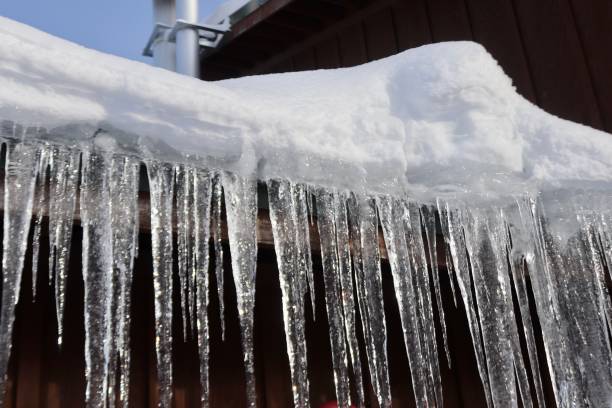Tips to Avoid Frozen Pipes in Cold Weather: Pro Tips
Tips to Avoid Frozen Pipes in Cold Weather: Pro Tips
Blog Article
The writer is making several great observations on Winter Plumbing Precautions: Preventing Frozen Pipes in general in the content followed below.

Cold weather can damage your plumbing, particularly by freezing pipelines. Right here's just how to stop it from taking place and what to do if it does.
Intro
As temperature levels drop, the risk of icy pipes rises, possibly resulting in expensive repairs and water damage. Recognizing exactly how to avoid icy pipes is important for house owners in chilly climates.
Prevention Tips
Insulating vulnerable pipelines
Cover pipes in insulation sleeves or use warmth tape to shield them from freezing temperature levels. Focus on pipes in unheated or external areas of the home.
Home heating methods
Keep indoor spaces adequately heated up, especially locations with plumbing. Open closet doors to allow cozy air to circulate around pipes under sinks.
Just how to identify frozen pipelines
Look for reduced water circulation from taps, unusual odors or sounds from pipelines, and noticeable frost on subjected pipelines.
Long-Term Solutions
Architectural changes
Consider rerouting pipes far from outside wall surfaces or unheated locations. Include added insulation to attic rooms, cellars, and crawl spaces.
Updating insulation
Buy top quality insulation for pipes, attics, and walls. Correct insulation aids maintain regular temperatures and decreases the threat of icy pipelines.
Safeguarding Outside Pipes
Garden pipes and outdoor faucets
Disconnect and drain pipes garden hose pipes before winter season. Install frost-proof faucets or cover outdoor taps with protected caps.
Understanding Icy Pipes
What triggers pipes to ice up?
Pipes freeze when revealed to temperature levels below 32 ° F (0 ° C) for prolonged durations. As water inside the pipes ices up, it increases, putting pressure on the pipeline wall surfaces and possibly creating them to burst.
Risks and damages
Frozen pipelines can result in water system interruptions, building damages, and pricey fixings. Ruptured pipelines can flood homes and cause comprehensive structural damages.
Indications of Frozen Pipeline
Identifying icy pipelines early can avoid them from bursting.
What to Do If Your Pipelines Freeze
Immediate activities to take
If you think icy pipes, keep taps available to relieve stress as the ice melts. Make use of a hairdryer or towels soaked in warm water to thaw pipes gradually.
Final thought
Preventing frozen pipelines needs proactive steps and fast feedbacks. By recognizing the causes, indications, and preventive measures, house owners can protect their pipes during winter.
5 Ways to Prevent Frozen Pipes
Drain Outdoor Faucets and Disconnect Hoses
First, close the shut-off valve that controls the flow of water in the pipe to your outdoor faucet. Then, head outside to disconnect and drain your hose and open the outdoor faucet to allow the water to completely drain out of the line. Turn off the faucet when done. Finally, head back to the shut-off valve and drain the remaining water inside the pipe into a bucket or container. Additionally, if you have a home irrigation system, you should consider hiring an expert to clear the system of water each year.
Insulate Pipes
One of the best and most cost-effective methods for preventing frozen water pipes is to wrap your pipes with insulation. This is especially important for areas in your home that aren’t exposed to heat, such as an attic. We suggest using foam sleeves, which can typically be found at your local hardware store.
Keep Heat Running at 65
Your pipes are located inside your walls, and the temperature there is much colder than the rest of the house. To prevent your pipes from freezing, The Insurance Information Institute suggests that you keep your home heated to at least 65 degrees, even when traveling. You may want to invest in smart devices that can keep an eye on the temperature in your home while you’re away.
Leave Water Dripping
Moving water — even a small trickle — can prevent ice from forming inside your pipes. When freezing temps are imminent, start a drip of water from all faucets that serve exposed pipes. Leaving a few faucets running will also help relieve pressure inside the pipes and help prevent a rupture if the water inside freezes.
Open Cupboard Doors
Warm your kitchen and bathroom pipes by opening cupboards and vanities. You should also leave your interior doors ajar to help warm air circulate evenly throughout your home.

Do you really like reading up on Preventing and dealing with frozen pipes? Try leaving a remark directly below. We will be happy to see your opinions about this write up. We hope to see you back again in the future. Appreciated our article? Please quickly share it. Help another person locate it. Thanks a lot for being here. Kindly stop by our blog back soon.
Click Here Report this page